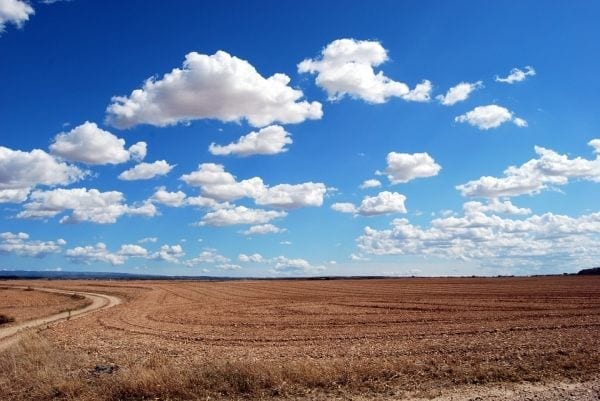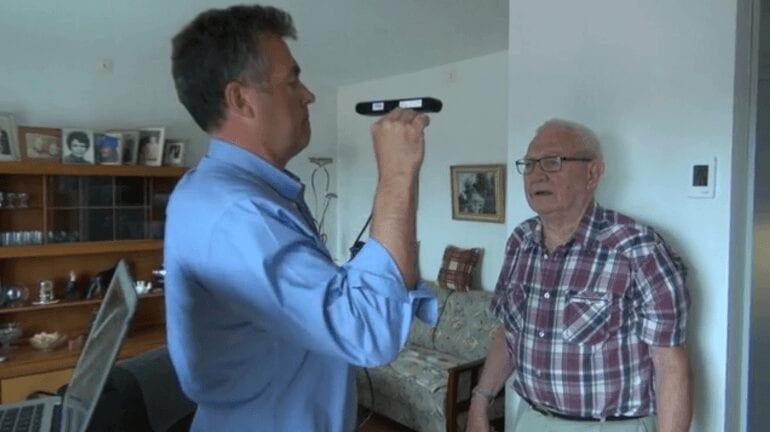
Farming is one of the few human activities that can pull CO2 from the atmosphere and store it safely
Farming is one of the few human activities that can pull CO2 from the atmosphere and store it safely
When the heavy rains came to Iowa this spring, corn farmer Dave Miller tilled the rolling portions of his 255-hectare plot. Cutting into the soil slows runoff and, particularly, prevents water from gouging big gullies in the fertile but softly held land. A few years back such tilling would have cost him money, thanks to an attempt to pair farmers improving the carbon management of their soils and companies looking to reduce pollution.
“We know that raising soil organic matter is good for soil, good for society and good for climate,” says Miller, whose day job is as an economist for the Iowa Farm Bureau (IFB). He once ran the nation’s largest agricultural carbon credit service. The idea is simple: The soil is one of the best places to put the carbon dioxide causing climate change, which has reached new highs in the atmosphere. Plants help put the carbon into the soil through photosynthesis—knitting CO2 and water into carbohydrates using the power of sunlight. And farmers can boost the process further by turning some of those plants into charcoal—or biochar, as advocates of the approach like to call it.
But farmers need incentives to adopt such practices. One of the few efforts to encourage farmers across the U.S. to tend to their land and the atmosphere alike was the now defunct Chicago Climate Exchange(CCX), a trading outfit that brought together a set of companies that volunteered to adopt a cap on CO2 pollution and traded carbon credits to meet that goal.
With the CCX, Miller set out to craft a climate program that would also “work for agriculture,” as he puts it, rather than being designed by “suits in Chicago.” In short, a program like CCX is put in place that establishes a limit for greenhouse gas emissions by a set of companies, such as electric utilities. Polluting companies in the program would have to reduce their own emissions or buy pollution-reduction credits from others. The farmers—represented by the IFB—would provide some of those extra CO2 reductions to the CCX market.
The Latest Bing News on:
Sustainable farming
- 2024 AIM Congress: Industry leaders explore investment opportunities in health security, sustainable agricultureon May 8, 2024 at 8:09 am
"Climate Smart Agriculture (CSA): The Future of Sustainability in Food and Agriculture Sectors," delved into critical issues surrounding sustainable agriculture practices. Moderated by Jose Francisco ...
- Six Aquatic Harvesting pumps to support sustainable, decarbonised agricultureon May 8, 2024 at 4:00 am
In this case study, we’re taking you into the innovative world of automated aquatic mechanical harvesting. It’s a radical development which could change the way our food, animal food and fertilisers ...
- ISU professor receives $49K grant for sustainable ag projecton May 8, 2024 at 3:00 am
Illinois State University student Ruth Burke received a $49,248 grant for her project focusing on mixed-power systems in sustainable agriculture.
- Indonesian Farming Startup Raises $2.6 Million From Insignia, Efishery Founderon May 8, 2024 at 12:55 am
“Beyond improving how and what we feed the world, Elevarm is cultivating sustainable agriculture solutions that bridge technology and tradition,” Efishery’s Huzaifah, who is also a Forbes Asia 30 ...
- Vietnam seeks collaboration with Australia on sustainable agricultureon May 7, 2024 at 8:14 pm
Deputy Minister of Planning and Investment Do Thanh Trung has expressed his wish for the support from the Australian Centre for International Agricultural Research (ACIAR) in optimising investment ...
- Optimising sustainable finance in agriculture via Public-Private Partnershipson May 7, 2024 at 7:17 pm
Key stakeholders’ transformative dialogue on strengthening partnerships and unlocking private investment in sustainable and resilient agri-food systems SLYCAN Trust and the Sustainable Development ...
- UC SAREP funds 8 sustainable food and farming projectson May 7, 2024 at 3:19 pm
Projects will support socially disadvantaged farmers, increase urban access to healthy food and more. The UC Sustainable Agriculture Research & Education Program (SAREP) is please ...
- Partnerships important to help farmers adopt sustainable practiceon May 7, 2024 at 2:10 pm
Resiliency is important for farmers to leverage resources and technology to make their operations sustainable for future generations.
- Identifying priorities to leverage smart digital technologies for sustainable crop productionon May 6, 2024 at 12:41 pm
Drones monitoring fields for weeds and robots targeting and treating crop diseases may sound like science fiction but is actually happening already, at least on some experimental farms. Researchers ...
- 3 Sustainable Agriculture Stocks Feeding the World and Fattening Your Portfolioon May 2, 2024 at 7:26 am
Sustainable farming stocks are set to surge due to robust long-term trend growth support and aligned fundamental valuation variables.More From InvestorPlace The #1 AI Investment Might Be This Company ...
The Latest Google Headlines on:
Sustainable farming
[google_news title=”” keyword=”Sustainable farming” num_posts=”10″ blurb_length=”0″ show_thumb=”left”]
The Latest Bing News on:
Soil carbon management
- Climate change depletes vital soil component and carbon sink, new study findson May 6, 2024 at 4:46 am
Researchers at the Technical University of Munich have proven their unsettling hypothesis: in places where climate change has a significant impact on average temperatures, humus, decomposed plant ...
- Management of Soil Resources of Kandi Belt of Jammuon May 5, 2024 at 3:53 pm
Dr R D Gupta Owing to the paucity of water available for irrigating the crops, the farmers of the Kandi belt of Jammu as well as those of Himachal Pradesh and Punjab practise rainfed agriculture. As a ...
- Sustainability: HeavyFinance Signs Ukraine Farmland to Carbon Farming Program for Shift to Regenerative Agricultureon May 5, 2024 at 2:32 pm
HeavyFinance signed 300,000 hectares of farmland in Ukraine to its carbon farming program, for shift over to regenerative agriculture.
- Leveraging science to enhance soil carbon productionon May 3, 2024 at 6:03 am
Soil carbon levels play a crucial role in nurturing microbial life, fortifying soil nutrient capacity, and supporting sustainable farming practices.
- This tech investor will pay Ukrainian farmers to trap carbon in their soilon May 2, 2024 at 2:59 am
In the case of Ukraine, local company Agsolco, will verify and issue the soil carbon credits. Companies or countries will buy these tokens as a way to offset their emissions. The more carbon farmers ...
- Making potatoes friendly to soil healthon May 1, 2024 at 11:44 am
Soil health is one major pillar in the push toward sustainable agriculture, and that’s an issue for an underground crop such as potatoes.
- Data is the key to carbon payments for farmerson April 30, 2024 at 10:52 am
But varying contracts, payments and conditions are proving to be (perhaps purposely) confusing; preventing many farmers from participating in carbon programs. Mitchell Hora offers one key word to ...
- Studies on Hainan Island rubber plantations reveal secrets of soilon April 30, 2024 at 10:04 am
Microscopic life thrives beneath our feet, playing a crucial role in soil health and carbon storage. Researchers from the Institute of Applied Ecology of the Chinese Academy of Sciences have been ...
- Regenerative grazing for carbon sequestrationon April 29, 2024 at 1:30 am
Baseline measurements of soil sequestered carbon are enabling one commercial research farm to quantify the impact of its transition to a regenerative grazing system.
- A revolution in quantifying soil carbon change is comingon April 28, 2024 at 10:32 pm
A revolutionary approach to both quantifying and understanding the drivers of soil carbon change will form the basis of Agrimix's presence at beef 2024 next week ..Read More ...
The Latest Google Headlines on:
Soil carbon management
[google_news title=”” keyword=”soil carbon management” num_posts=”10″ blurb_length=”0″ show_thumb=”left”]










